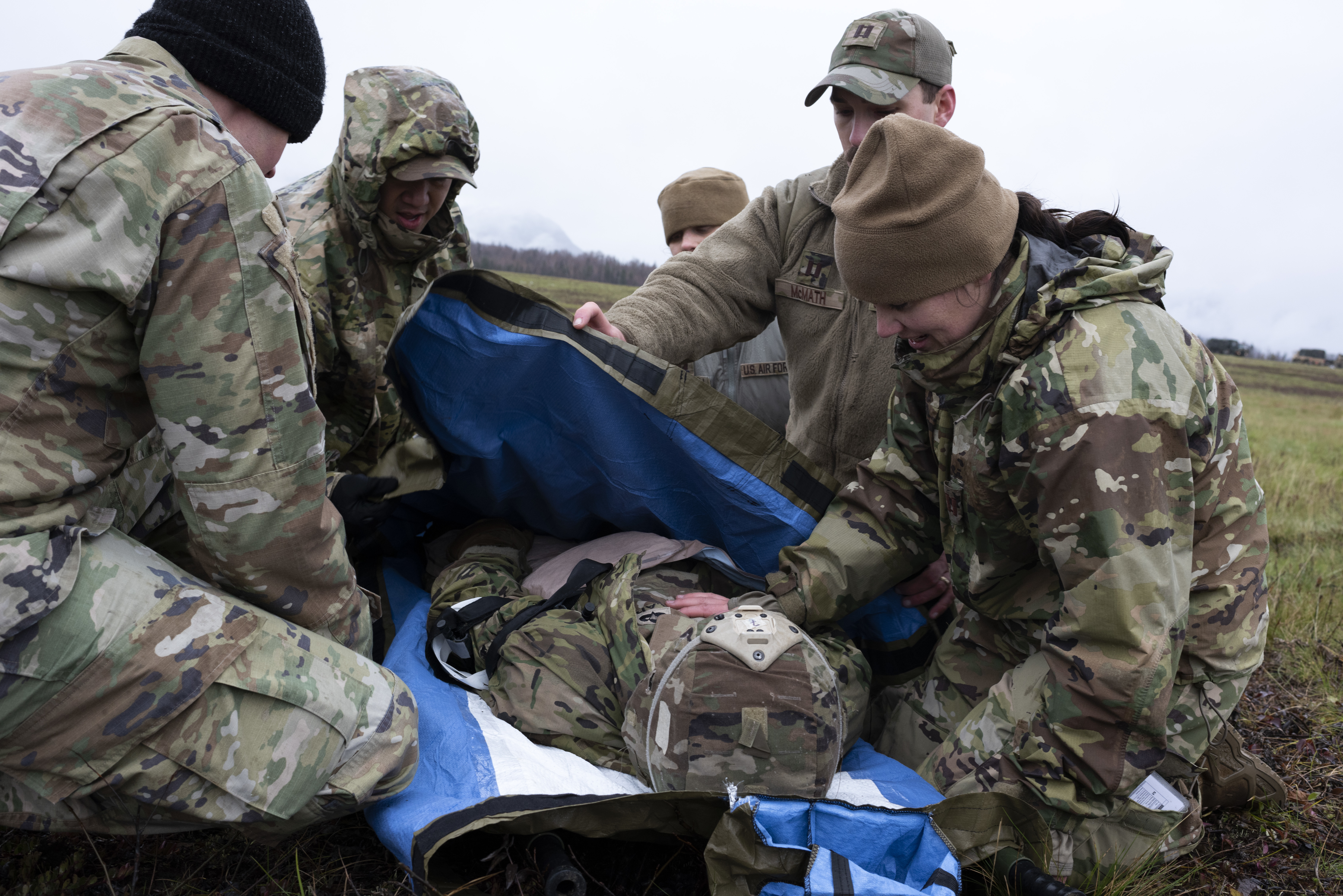
Enhancing Medical Support in Extreme Conditions: Below Zero Medicine Tech Exchange

The Below Zero Medicine Tech Exchange is a collaborative project that involves NSIN, the 673d Medical Group, the University of Alaska Anchorage, and Arctic Spark, a program based out of Alaska’s Joint Base Elmendorf-Richardson that empowers Airmen to spur innovation by submitting problems and ideas to leadership. The project aims to teach Airmen how to properly care for fellow service members who need medical care while operating in cold, austere environments.
The Below Zero Medicine Tech Exchange hosted its first Tech Exchange Meeting earlier this year. NSIN engaged local innovators, students, and other researchers to take part. The meeting allowed innovators to display early-stage prototypes of support equipment for use in the field.
NSIN leveraged its extensive network of military leaders, academic institutions, and emerging companies to help solve this critical program.
“NSIN served as a conduit for these organizations, helping connect the dots between the needs of the Department of Defense and the capabilities of academic researchers and innovators,” said Tanya Parypa, Northwest Regional Director at NSIN. “Alaska and cold environments provide unique challenges that require new solutions that break from the norm.”
Extreme conditions present unique challenges, especially for medical and military personnel. One major issue is the need for solutions to control medication and medical equipment temperature to maintain their efficacy. To tackle this challenge, the initiative has developed temperature-controlled tents and containers. These structures offer a stable environment for storing medical supplies, ensuring the cold outside does not cause the supplies to reach temperatures below the optimal range.
Transporting medical supplies to remote locations poses yet another challenge. Traditional methods of transport often need to catch up in extreme conditions where they struggle to keep medical supplies at appropriate temperatures, especially over longer journeys across difficult terrain.
The innovations under consideration ensure that military medical personnel can transport medical supplies to remote environments. Without this type of technology, medical personnel have more limited options to treat the warfighter in cold, austere environments.
The innovations include:
- Temperature-Controlled Tents: These tents leverage flexible heat strips to maintain a stable temperature, providing a safe space for medical professionals and their patients. The tents are portable, easy to set up, and can rapidly deploy to different locations without compromising care quality. The innovation comes in the form of novel heating solutions, as the strips used must provide efficient and consistent heat in severely cold environments. The strips must be rechargeable, lightweight, and able to withstand freezing temperatures.
- Temperature-Controlled Containers: These containers use a modified tri-wall that employs aerogel technology for insulation. The containers' temperature is further regulated via heat strips. The temperature-controlled containers help protect supplies dropped off during resupply missions, as they are often exposed to extreme temperatures for extended periods of time.
- Lightweight Sleds: Another standout innovation is the lightweight sled designed to transport medical supplies. The sled’s portability allows for easy navigation across snow, ice, and mountains. The sled is equipped with temperature-controlled compartments, ensuring the safe transportation of sensitive medical supplies. The ability to transport supplies that must maintain a specific temperature, such as liquid medication, into specific areas without it freezing.
“The event highlights the importance of medical readiness and what a ready medical force looks like in the Air Force, showcasing our Below Zero Medicine and deployment teams’ capabilities in a deployed environment,” said U.S. Air Force Maj. Christine Morshed, TRICARE Operations and Patient Administration flight commander for the 673d Medical Support Squadron. “Ready medical forces remain a priority of the 673d MDG, and our civilian network providers help immensely to provide outstanding care. We are excited about hosting this event in the future and appreciate the support the Alaska community provides to us.”
Photo: Airmen from the 673d Medical Group render tactical combat casualty care (TCCC) to simulated U.S. Army airborne casualties during the Arctic Warrior Challenge 2022 at Malemute Drop Zone, Joint Base Elmendorf-Richardson, Alaska, Oct. 20, 2022. Photo by Alejandro Pena.
About National Security Innovation Network
NSIN is a program office in the U.S. Department of Defense, nested within the Defense Innovation Unit (DIU). We are set up to collaborate with a wide variety of innovators to include universities, researchers, students, entrepreneurs and start-ups. We create opportunities for collaboration across communities and connect those that might not traditionally work in national security. Together, we help drive national security innovation and develop technologies that directly support the individuals responsible for protecting our country.